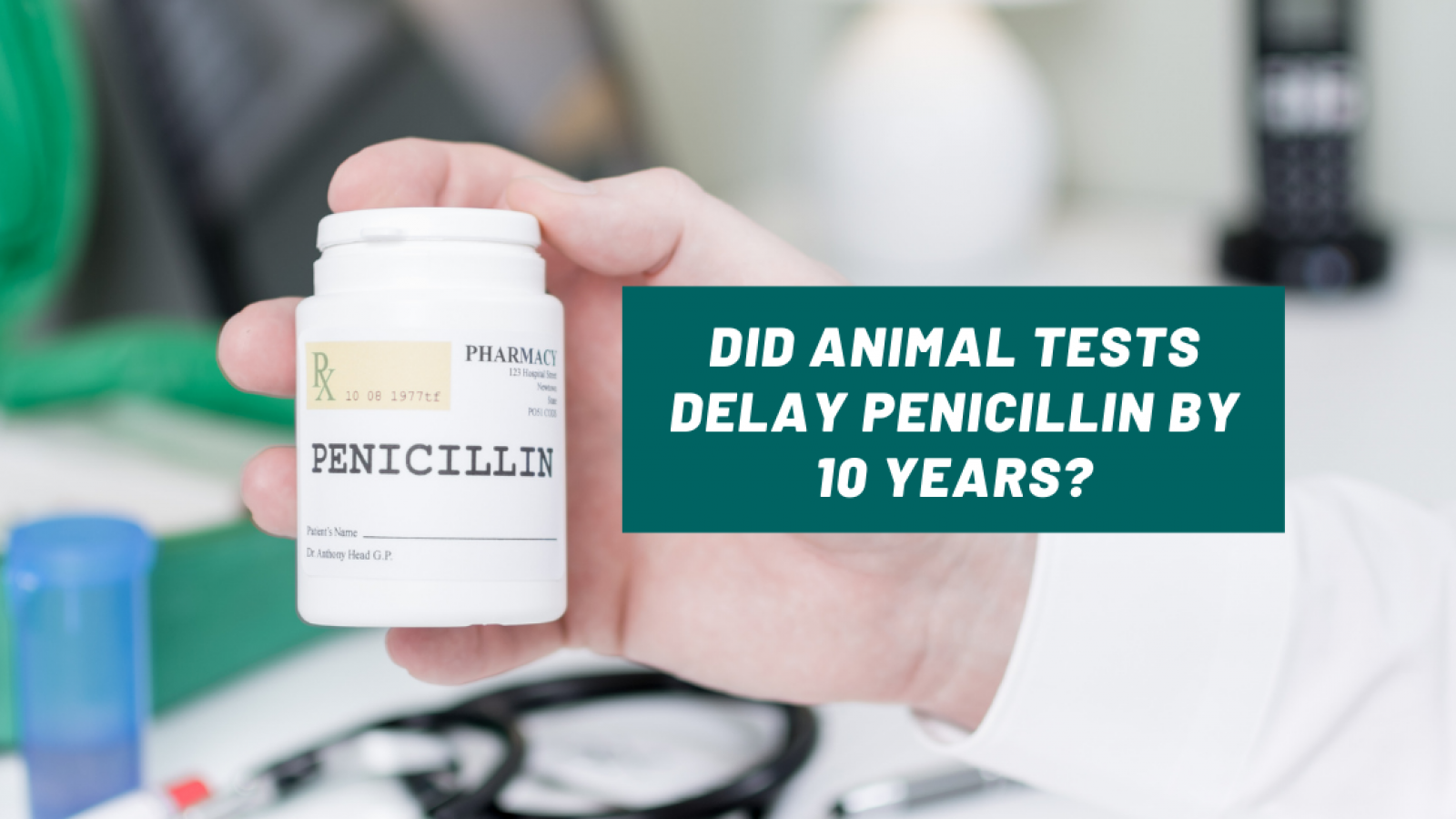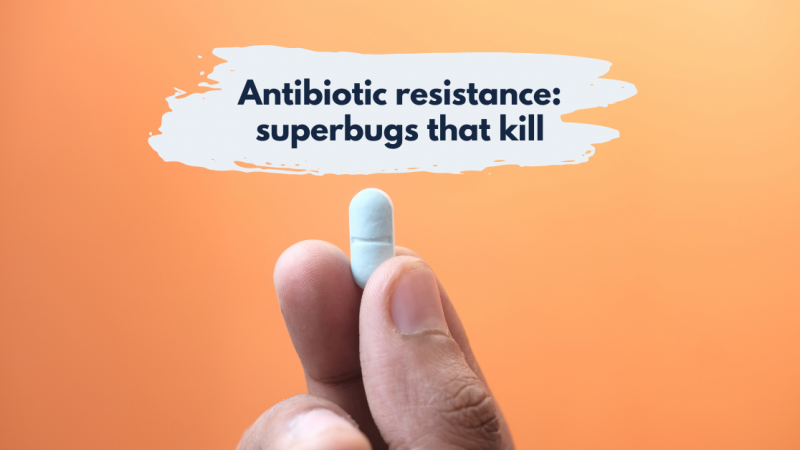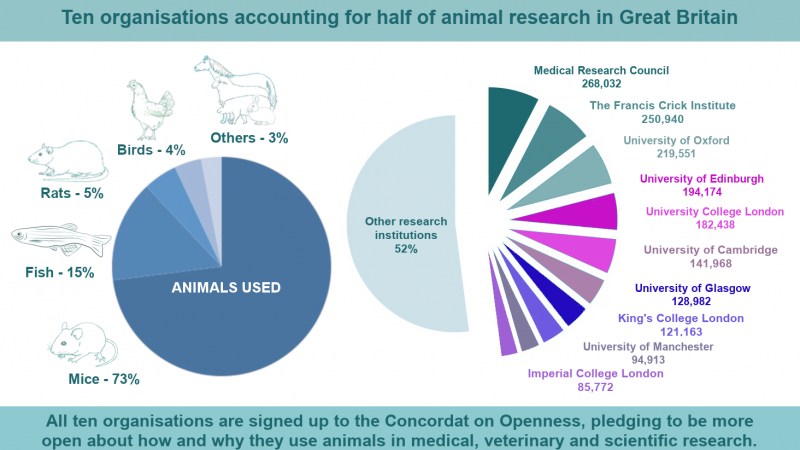On Friday February 22, Good Morning Britain ran a piece on the use of dogs in medical research. In the studio was Professor Nic Wells from the Royal Veterinary College who explained how he uses dogs in his research. Opposing him in the studio was actor Peter Egan, and anti-vivisection scientific advisor Andre Menache was shown on a screen live from Paris.
Both Mr Egan and Dr Menache make a number of claims in the interview and, it’s important to understand how they might have come to one conclusion or another. If you’re starting from a position of wanting to understand rather than dogmatically trying to prove a point the facts matter, even if they make for uncomfortable reading. Was penicillin really delayed for 10 years due to animal experiments? Was there any consensus that diabetes is a liver disease?
Claim: There is no peer-regulated oversight over animal experiments
Where could this have come from? It is very hard to imagine where this might have come from. Every single experiment undergoes peer-regulated oversight in a number of different ways. Firstly an Animal Welfare and Ethical Review Body made up of peers and colleagues at the scientist’s own establishment determines whether or not an experiment can take place. On these sit scientists, animal care staff, vets and perhaps lay members of the public. The Home Office also oversees each application as the UK enjoys both national and local ethical review. Finally, the work of the responsible government minister is advised by the Animals in Science Committee, which again has a range of members including, currently, a representative from PETA and one from the RSPCA. Beyond this, every experiment is published on the Home Office website written in plain English and the UK has been inspecting animal experiments since 1876. In fact, the UAR office has all of the annual returns of animals used since 1876, including the animal experiments of Alexander Fleming, described later.
Verdict: Totally false. In fact, the exact opposite is true.
Claim: According to the BMJ and the US FDA, no animal can predict how a drug or chemical will behave in the human body.
Where could this have come from: They are both exaggerations of a misunderstanding. The British Medical Journal (BMJ) ran an editorial in 2014 which correctly asserted that poorly designed experiments led to bad results. However, it does not follow that well designed experiments give poor results. The editorial was not focused on the concept of using animals, and it did not claim that animals cannot predict human responses.
A director of the US food and Drug Administration (FDA) Mike Leavitt claimed in 2006 that “Currently, nine out of ten experimental drugs fail in clinical studies because we cannot accurately predict how they will behave in people based on laboratory and animal studies”. The misunderstanding in this case centres around how animals are used in drug development because they are very good at detecting whether a new drug is toxic at the intended dose, but not as good at predicting whether a drug is effective. Leavitt is talking about the latter and of course mentions ‘laboratory and animal experiments’ i.e. everything that is not a human trial including computer models and cell cultures. Leavitt’s comment is also not quite accurate since there are numerous reasons that drug development is abandoned. In 32% of cases it is because the company developing it rationalised their portfolio.
Verdict: The BMJ did contain an editorial raising concerns over the need for good experimental design. However, the BMJ at no point endorsed the idea that animals don’t predict human reactions. The FDA not only says that animals can predict human reactions, but has entire websites dedicated to demonstrating how this works. The only possible derivation of this claim is such a well-worn myth it has been corrected numerous times, most recently in “Postcards from the post-fact front line”
Claim: A hundred vaccines against HIV tested well in animals, including monkeys, none worked for humans
Where could this have come from? Creating vaccines for viruses is especially difficult because they evolve so fast, and it is inevitable that many attempts will fail. Nonetheless, one vaccine, RV 144, has been shown to prevent HIV in some individuals, so it is not true that there have been no successful tests in people.
It is true that it may be some time before we get a really effective vaccine against HIV - although we can prevent HIV becoming AIDS with medicines developed through animal research - but it will only be possible if we have animal models to test the vaccines on. Infecting human volunteers with live HIV virus - which would be necessary to provoke an immune response - would just be too dangerous.
Verdict: False and misleading. There are no universal vaccines for HIV yet but there is one that offers limited protection. A more effective vaccine will only be possible if we can use animal models to develop it.
Claim: Dog experiments on insulin led researchers to believe that diabetes was a disease of the liver
Where might this have come from? This misunderstanding probably comes from a famous experiment conducted in the 1850s by scientific pioneer Claude Bernard. Bernard found that the certain sugars are created in the liver. The primary role of the pancreas in diabetes, which had long been hypothesised, was proven by scientists working with dogs later that century, the story of which is recounted in the speech granting Banting and Macleod the 1923 Nobel prize for physiology. Researchers at the time systematically removed organs from animals to identify the effect on their bodies. It is hard to see how the research could have been done without an animal model.
Verdict: False. The liver theory of diabetes was never a majority view and in no way held up science. Studies in dogs are what led to the breakthrough in our understanding and, later, effective treatment of the disease.
Claim: Penicillin was delayed by 10 years for human patients because it had no effect on rabbits
Where could this have come from? Alexander Fleming tested penicillin on mice and rabbits and also in test tubes. He found it was safe but only effective for light infections because it wasn’t concentrated enough. It was Fleming’s failure to discover a technique for purifying penicillin that restricted its use to minor ailments like eye infections for the next few years. Howard Florey, a pathologist, and Ernst Chain, a biochemist, took a renewed interest in Fleming’s work while looking for new antibiotics in 1940 and set a member of their team, Norman Heatley, the task of purifying it, which he eventually did using bedpans, milk churns and bathtubs rigged together. These concentrated doses were tested on mice and found to be effective. Even then, ten years after its discovery, it was impossible to make in large quantities. In fact, it took the emergency of the second world war to inspire the technology that would enable the industrial manufacture of pharmaceutical grade penicillin and change the world.
Verdict: False. Animal models demonstrated the efficacy and safety of penicillin, but technical problems delayed its production in concentrated form. Once purified, animal tests demonstrated systemic protections and safe dosages and the application to humans of this stronger compound was started.
People have differing views on animal research which are as unique and nuanced as their personal morality is. However, a view is only as good or moral as the information it’s based upon. It is fair to say that none of the points presented as fact by activists on Good Morning Britain stand up to scrutiny.
Last edited: 5 April 2022 11:48




